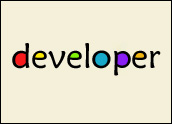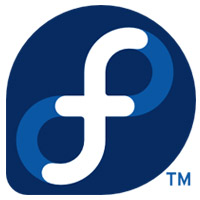
Open source software is a passion for some and a business for others. Daniel Robbins became “Tuxified” early in his computing education and was driven by a need to make Linux better than he found it.
Robbins created two Linux distributions: Gentoo and Funtoo. He created Gentoo Linux during his time as a systems administrator at the University of New Mexico. He released his new distro in 2002 and found it created enormous interest almost immediately. It remains one of the most high-profile, source-based Linux distributions around, even becoming the basis for Google’s high-end Chrome OS.
Funtoo, meanwhile, is a project that Robbins created to extend the technologies for Gentoo.
Bringing both of his creations with him, Robbins now serves as the community manager at Zenoss, an open source monitoring and systems management firm. He heads an extremely large community base of systems administrators.
In this interview, Daniel Robbins tells LinuxInsider what made him an open source aficionado and a Linux innovator. He talks about what made his first open source project so successful and his perspectives on maintaining a larger open source community.
LinuxInsider: Tell me about Zenoss.org and your role as community manager there.
Daniel Robbins: When I developed Gentoo, I didn’t have access to a lot of the powerful hardware that they have in a data center, such as switches, routers, blade servers and that sort of thing. I recently developed an interest in getting more exposure in the IT world, and what is involved in running a data center and the various cloud servers being leveraged.
Zenoss has a really interesting solution that is open source. You can put it into a data center. It is an agentless solution that will monitor Linux machines and Windows machines with [Windows Management Instrumentation]. It will hook into cloud services and lower-level networking infrastructure like routers and switches and monitor all of that infrastructure. You can use this as a centerpiece for all of the data center operations.
LI: What influenced you to become active in open source?
Robbins: It was something I wandered into. It was part of my own self-directed education and exploration of technology. I wanted to install it, learn it and play around with it. That is what pulled me in. It sort of developed organically from there.
I started using Linux. Because it was open source, I could play around with things, and I could change the source code a little bit. Then I found that I could build my own distribution. That is what led me into creating Gentoo.
LI: How are your job at Zenoss and your role in developing Gentoo Linux related?
Robbins: There is a tie-in now as we expand our support for other Linux distros besides Red Hat and Zenoss. The first two additions I will be supporting are Gentoo and Funtoo.
LI: How is Funtoo related to Gentoo?
Robbins: Gentoo has grown into a very large and successful project. It has over 200 developers. I actively ran the project until around 2004. I wanted to get more involved with Gentoo-related technology. Around 2008 I started Funtoo, which is a variant of Gentoo. It is a smaller project where I can play around with different technologies and add new technology that I am interested in. So it is very similar to Gentoo.
In fact, a large portion of it is Gentoo, but we were able to add things like new network technology. We are supporting native UTF-8 installation by default, and we have some improved boot processes. It is a smaller group that is easier to fit into the day job. Gentoo really needs to be run by a foundation with that number of developers.
LI: What was the impetus behind creating Gentoo Linux?
Robbins: I created Gentoo around the year 2000. For me it was a means of exploring and learning about Linux and open source technology. I used a few other Linux distros prior to working on Gentoo: I used an early version of Debian; I did a little bit of development on a distro that has now disappeared called Stampede Linux. I got to the point where I wanted to do some things in Linux that I really didn’t see in other Linux distributions. There was a lack of flexibility and automation in terms of how the system was built, and there was a lot of manual work involved.
So I created Gentoo, which is a meta-distribution. That means it is built automatically from source code. And it is customizable on the fly with the functionality you want it to have.
LI: What makes this level of customization such an attractive feature?
Robbins: You can weed out the unnecessary features and the bloat that you do not want, and you can specifically include the capabilities that you do want. That happens at a very fine-grained level. It is beyond just picking the packages that you want. You can actually determine what features are enabled in each package.
LI: Dumbing down the OS seems counterproductive given the large number of competing Linux distros. What is the advantage to your approach for users?
Robbins: A lot of Linux distributions actually have a very large footprint because they have to build packages in sort of a one-size-fits-all fashion. It has to work for everybody, so they have to enable all of the features.
When you do that, it also pulls in a ton of dependencies. So the footprint of the distribution becomes very large. You can have a lot of things running, and things can get kind of slow.
LI: How difficult is it to design a distro to accomplish this goal?
Robbins: With Gentoo we can avoid that simply by calling in just what the user needs. Because it is so highly customizable, you tend to get a lot better performance. Because we are building from source, the entire system can be optimized for your particular CPU, right down to the family of the CPU processor. So we can enable the optimization in the decompiler to exact even more performance.
LI: That degree of specialization sounds costly to perform, yet Gentoo is a noncommercial distro. How do you make that happen?
Robbins: Ultimately, the end users do it themselves. Gentoo has been used for a lot of high-profile projects. Probably the highest-profile use that I am aware of is that it is the basis of Google’s Chrome OS that powers the Chromebook.
Both Gentoo and Funtoo are free software. We support the ability of anyone to fully leverage the technology for free by just using our documentation.
LI: Then how do you manage to monetize and financially sustain the ongoing development of your two Linux distros?
Robbins: There is no money stream to support these two distros as a business. I put them out there for the benevolence of open source. I set up a foundation called the Gentoo Foundation, which currently runs Gentoo development and has been since late 2003.
For Funtoo I do not have a not-for-profit set up currently, but we operate it as if it were. It is not run in a for-profit fashion. All of our source code is shared. Our documentation is free, and we provide free support.
LI: How widespread is the use of Linux in enterprise?
Robbins: It certainly continues to grow. Linux adoption is very significant in the enterprise. In the mobile space Linux is playing a prominent role. People are building closed mobile platforms around Linux, but eventually those devices are going to start migrating to the enterprises as well.
It is very likely that the OS of choice for those mobile devices will continue to be Linux. I think as the enterprise evolves to address the lower-powered devices, we are going to continue to see Linux grow in popularity.
LI: Aside from Gentoo’s highly customizable design, what do you see as the main driving point for its strong adoption?
Robbins: I think it has to do with the fact that I developed innovation to fit in really well with what was going on in open source. Gentoo has a thing called the port system. It is a repository of software that people can build and install. I provided an easy way for developers to add new software to the port system.
That created a rapidly growing community around adding new versions to the software. A lot of the development of open source requires the most up-to-date software, which may not always be available in other distributions.
LI: That sounds like something other distros would want to tap into. Are you finding that interest in your innovative port system is spreading?
Robbins: I think that Gentoo has served as a model for community-based distribution for a lot of people. So yes.




















































